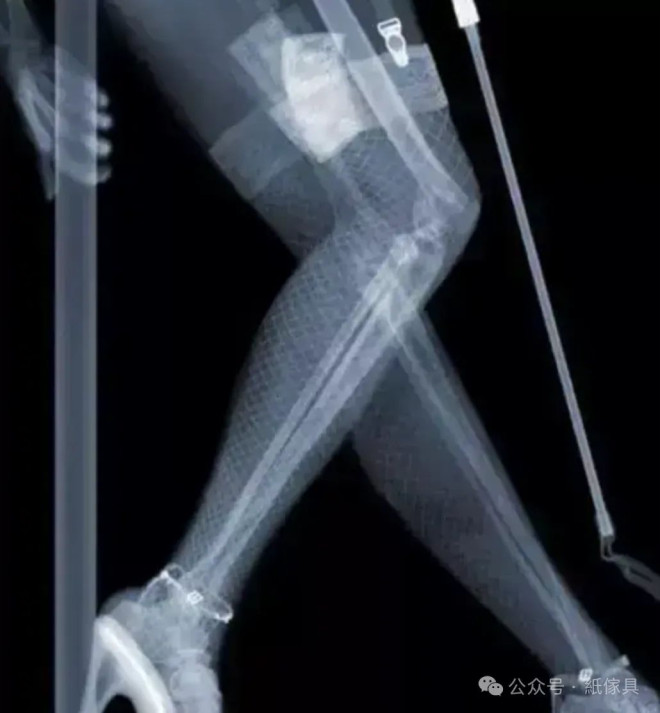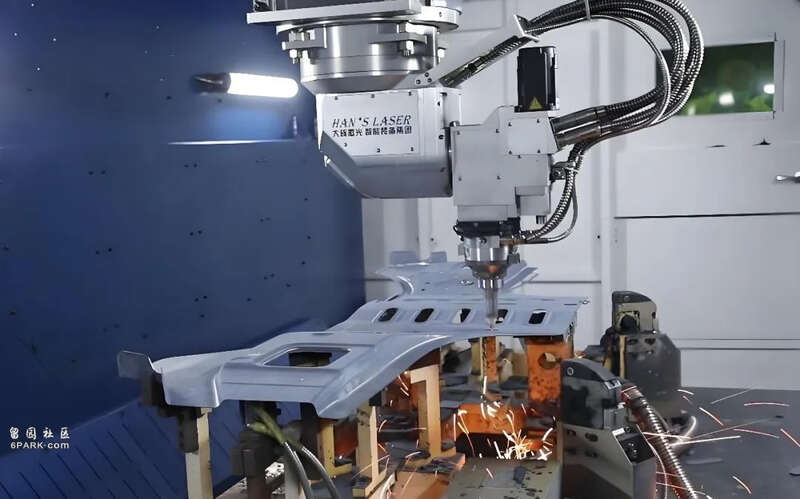癌症晚期脑转移诊断又迈一大步,AI等共显身手
来源:倍可亲(backchina.com)
电生理学家、分子生物学家和AI科学家共叙肿瘤脑转移
倍可亲特稿/科学专题 By Lily “传统”生物医学专业人士,如分子生物学家、生理学家、化学家、病理学家、放射科医生和临床医生等,可能对人工智能(AI)有种相当复杂的感情。人工智能的功能如此强大,其应用如此广泛,简直遍及各个领域,包括数据分析、病理诊断、蛋白质结构预测、药物设计、行为预测、手术设计和生物工程项目等。只要您对生物医学是真爱,您肯定会为人工智能的前景兴奋不已。然而,如果您在阅读研究论文、聆听会议演讲,或在 LinkedIn 上找工作时,“人工智能”一词动不动就跳到眼前,躲都躲不掉,您内心可能会开始焦虑,觉得作为一名“传统”研究人员自己有点落伍了。不过呢,也不用那么担心。至少目前,人工智能仍然是一种依赖其他数据源量化分析的工具,数据嘛,不总要通过什么组织学图像、放射扫描、流式细胞术、基因组分析、蛋白质分析,和空间转录分析等“传统”研究模型来获得。
请记住,每个研究人员都是独一无二的,再者,精诚合作好过无序竞争。此处就有一个各大领域科学大牛们精诚合作的典型案例:最近,一些西班牙和美国的神经生物、实验治疗、解剖和细胞生物、生理和生物信息等多个领域的研究人员,共同展开了一项用创新的方式,在活体实验小鼠上诊断肿瘤脑转移的研究。合作结果非常成功,成绩非常喜人,文章发表在 2023 年 9 月 11 日的著名期刊《Cancer Cell》上,标题为“Machine learning identifies experimental brain metastasis subtypes based on their influence on neural circuits” (https://www.cell.com/cancer-cell/pdf/S1535-6108(23)00250-7.pdf).
众所周知,很多癌症晚期时都会转移到脑部,其中乳腺癌、黑色素瘤和肺癌最常发生脑转移。很不幸的是,脑转移患者大多数预后并不乐观,发生脑转移后,患者平均生存时间只有六个月。不过,如果早期发现早治疗,患者的生存时间可以大大延长,某些情况下甚至可以完全治愈。鉴于脑转移可引发一些严重的症状,如头痛、癫痫、平衡失调、视力障碍、认知障碍等,早期精准诊断脑转移至关重要。传统的放射扫描诊断法显然没那么灵敏。
那这次生物医学界的重大合作作出了什么壮举呢? 研究的第一阶段由电生理学家主导。 研究人员将乳腺癌、黑色素瘤和肺癌细胞接种到实验小鼠的大脑中,模拟癌症脑转移。 随后,他们在小鼠大脑植入 16 通道线性探针,通过探针收集转移瘤组织附近区域的局部场电位 (LFP) 。研究人员观察到,三种转移瘤瘤周的皮质和海马区域的 LFP 普遍降低,其中肺癌转移瘤引发的 LFP 降低最为明显。有趣的是,LFP的降低与转移瘤大小和微环境的变化无关。此现象对脑转移的传统认识来了一个灵魂拷问:脑转移的临床症状真的是因为占位性病变引起的么?
于是,故事进入第二阶段,分子生物学家担任主演。研究人员通过组织学、免疫组织学和电子显微镜分析,观察到转移瘤周围的神经元基本上未受影响,神经丛结构保存完好。然而,与其他两种癌症类型相比,肺癌转移瘤周区域的抑制性突触和钙活性显着降低。为了揭示此中的分子学机理,研究人员对三种脑转移癌细胞做了全外显子组测序,然后做了差异基因表达分析。他们发现有 51 个与神经元通讯有关的基因在肺癌转移瘤存在差异表达,而这 51 个基因中,转录因子 EGR1(可调节血管生成和突触通讯),是进一步深度研究的首选基因。随后,研究人员对肺癌转移瘤组织中的Egr1+癌细胞进行了单细胞RNA测序。分析发现,NF- kB通路上的TNFα 信号可当作Egr1+ 细胞簇的分子特征(四个 Egr1+ 细胞簇中的三个有此特征)。这些发现进一步证明,占位性病变并不是脑转移症状的唯一原因,肿瘤组织内的分子信号传导反而可能起着更关键的作用。
现在AI科学家要闪亮登场讲故事的第三部分了!研究人员首先创建了一个包含 492 个样本的庞大数据集,数据库涵括了包括多种变量的电生理学谱,变量包括转移瘤类型、检测位置(左/右脑半球)、行为状态(运行/静止)、数据来源(脑皮质/海马区)以及不同电路震荡的波长等。基于这些数据,研究人员开发了一个广义线性模型来拟合和区分所有电生理曲线。然后,研究人员通过主成分(PC)分析,确定了9个主要方向。这9个方向足以解释99%的电生理数据变量,甚至有区分脑转移亚型的能力。
最后,故事的高潮部分来了:重复迭代训练模型。研究人员最初选择了五个不同类别的预测器参加机器学习训练,但最终只选择了准确性最高的Decision Tree Classifier。训练后的结果好得惊人,Decision Tree Classifier在癌细胞植入短短 7 天后就可以灵敏地探测到脑转移瘤,而且,当把新型肺癌细胞接种到小鼠脑部后,Decision Tree Classifier也能精确识转移瘤的亚型。基于这些重大发现,研究人员宣布基于电生理模式的AI模型可以鉴定活体实验小鼠的脑转移瘤亚型。
这个由电生理学家、分子生物学家和AI科学家共叙的精彩故事到此结束。我个人觉得,如果这个故事的AI部分与“传统”模式部分(尤其是分子特征部分)有更多的关联,故事可能就更完美了。当然,人类与癌症的斗争将是一个漫长的旅程,这项研究虽然成果丰硕,也不可能揭示脑转移的所有谜底。这项研究的最动人之在于,不同领域的科研人员可以如此通力合作,无论研究者的背景是更传统的还是更现代,每个人都把自己的专长发挥到了极致。
最后,让我们对此项研究中身兼重任的实验动物表示诚挚的敬意。如果您认真阅读了此论文的材料和方法,您无疑会对这些小动物为我们人类所做出的牺牲肃然起敬。尽管每只实验动物可能连名字都没有,但它们作为一个整体,值得被感激和铭记。
Brain Metastasis Story Narrated by Electrophysiologists, Molecular Biologists, and AI Scientists Together
BackChina Science Lily
“Traditional” biomedical professionals, such as molecular biologists, physiologists, chemists, pathologists, radiologists, and clinicians, may have complicated feelings about AI. AI is exceptionally powerful, and its applications are pervasive in various fields, including data analysis, pathological diagnosis, protein structure prediction, drug design, behavior prediction, surgical design, and bioengineering projects. If you are a devoted enthusiast of biomedical sciences, AI’s potential is sure to excite you. However, as you read research papers, attend conference presentations, or search for jobs on LinkedIn, the term “AI” may grab your attention more than you like. You might feel somewhat outdated and anxious about your role as a “traditional” researcher. But no worries. For the time being, AI remains a tool that relies on other sources of data for quantification, data that are gathered from a variety of “traditional” research models, including histological images, radiological scans, flow cytometry, genomics, proteomics, and spatial trans**tomics analysis, among others.
Each researcher is unique, and it is important to remember that collaborative efforts are often more fruitful than disorderly competition. Here is a prime example: a recent extensive collaboration involved researcher from various fields, including neurobiology, experimental therapeutics, anatomy and cell biology, physiology, and bioinformatics, from research organizations in Spain and the US. Together, they made significant contributions in developing innovative strategies for diagnosing brain metastasis on live experimental mice. The leading-edge discoveries were published on September 11, 2023 in the renowned journal Cancer Cell, under the title “Machine learning identifies experimental brain metastasis subtypes based on their influence on neural circuits” (https://www.cell.com/cancer-cell/pdf/S1535-6108(23)00250-7.pdf).
As we are aware, brain metastasis often afflicts cancer patients in the advanced stages of the disease, with breast, melanoma, and lung cancer being the most common culprits. Unfortunately, the prognosis of most patients who develop brain metastasis is not optimistic, with an average survival time of only six months. However, early detection of brain metastasis and effective management of primary cancers can significantly extent the patients’ life, in some cases, can lead to even a complete cure. Given that brain metastasis can cause severe symptoms, including headaches, seizures, loss of balance, vision disturbance, and cognitive disabilities, early and accurate diagnosis is paramount. Obviously, conventional radiological scans are not sensitive enough required for this task.
So, what is the narrative behind this significant collaboration? The first phase was led by electrophysiologists. Researchers inoculated breast, melanoma, and lung cancer cells to the brains of the experimental mice to mimic brain metastasis. Subsequently, they collected local field potential (LFP) recordings from regions adjacent to the tumor tissues, using a 16-channel linear probe implanted within the mouse brains. The researchers observed a general reduction LFP from both cortical and hippocampal areas, when brain metastasis from breast, melanoma, and lung cancer were present, with the most pronounced LFP decrease from lung cancer metastasis. What is more intriguing is that the LFP decrease was unrelated to tumor sizes and microenvironmental changes, directly challenging the conventional belief that mass effects are the primary drivers of brain metastatic symptoms.
Consequently, the narrative progressed to its second phase, the molecular mechanisms. Employing histological, immunohistology and electronic microscope analyses, researchers observed that the neurons surrounding the metastatic tumors largely remained unaffected, and the neuropile structure was well-preserved. However, there was a significant reduction of inhibitory synapses and calcium activity in the peritumoral area of lung cancer metastasis when compared to the other two cancer types. To unravel the mechanisms behind, researchers performed whole exome sequencing on all three cancer cell lines and compared the differential gene expressions. They identified 51 genes with differential expression in lung cancer cell line, particularly involved with neuronal communication. Among the 51 genes, trans**tion factor EGR1, known for its role in angiogenesis and modulation of synaptic communication, stood out to be the top candidate for further investigation. Therefore, researchers conducted single-cell RNA-seq on Egr1+ cancer cells on lung cancer metastatic tissues. This analysis revealed a molecular signature involving the tumor necrosis factor alpha (TNFα) signaling via nuclear factor kB in three out of the four Egr1+ cell clusters. Those findings provide further evidence that mass effects do not alone account for all brain metastatic symptoms, instead, molecular signaling within the tumor tissues may play a more critical role.
Now, it is time for the AI scientists to narrate the third and the final part of the story. Researchers started by creating a vast dataset encompassing 492 samples, which incorporated electrophysiological profiles with multiple category variables, including metastatic type, detection location (Left/Right hemisphere), behavioral state (Run/Still), the origin of the data (Cortex/Hippo), and various circuit oscillation wavelengths. And then, the researchers developed a generalized linear model to fit and distinguish all the electrophysiological profiles. Moreover, through implementation of principal component (PC) analysis, researchers identified 9 major directions which could explain a staggering 99% of the data’s variance, which even include the capacity to discriminate brain metastasis subtypes.
The most exciting part followed: to train the model through repetitive iterations. Researchers initially utilized five class predictors for training but eventually settled on Decision Tree Classifier, given its superior accuracy. Astonishingly, Decision Tree Classifier could sensitively detect brain metastatic cells as early as 7 days post implantation. What’ more, it could precisely identify metastatic subtypes resulting from new types of lung cancer cells not included in the initial training dataset. Based on those remarkable findings, researchers concluded that machine learning, based on electrophysiological patterns, holds the potential to identify metastasis subtypes within the brain of live experimental mice.
And with that, we conclude the narrative, jointly presented by electrophysiologists, molecular biologists, and AI scientists. A wonderful story, isn’t it? Personally, I believe that it could be even more engrossing if the machine learning part had more interconnection with the “traditional” component, specifically, the molecular signature segment. Nevertheless, the battle against cancer will be a long journey, while this study remarkable, cannot encompass everything about the brain metastasis puzzle. What truly shines in this study was the great collaboration among researchers from diverse fields; irrespective of whether their backgrounds are more traditional or contemporary, each group exhibited their utmost expertise.
Moreover, let’s spend a moment to show our respect for the experimental animals that played indispensable roles in this study. If you have diligently perused the materials and methods section of this paper, you will undoubtedly appreciate the sacrifices these little creatures made on behalf of us, humans. Even though each animal may not have had a name, as a collective, they deserve to be remembered and acknowledged.









